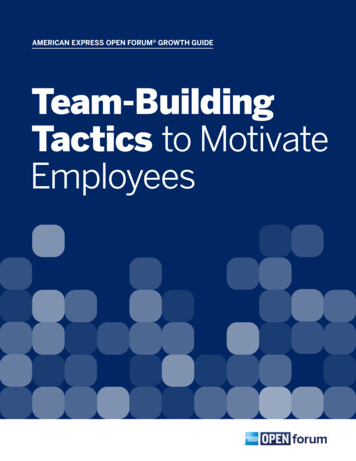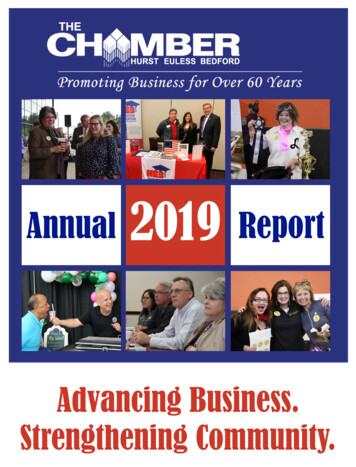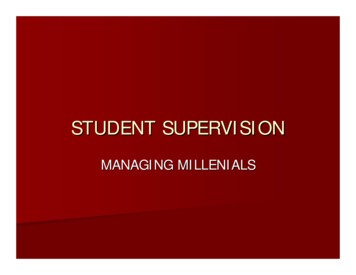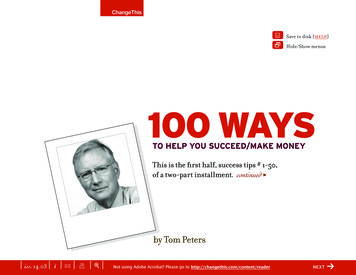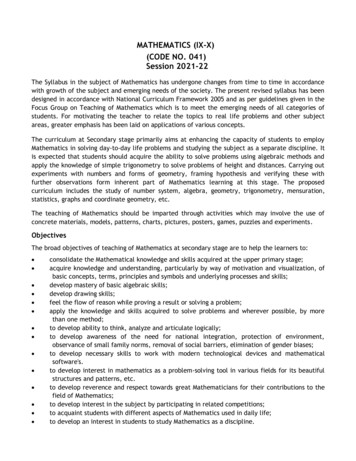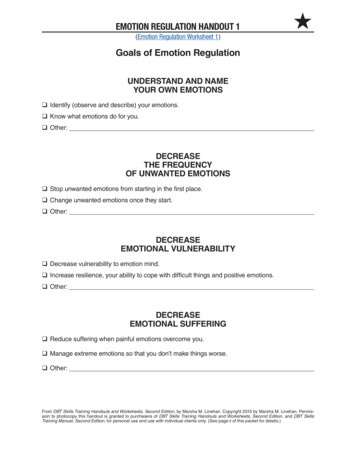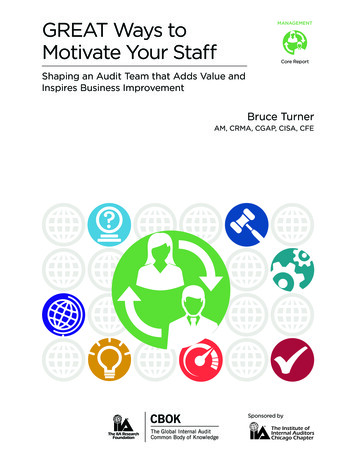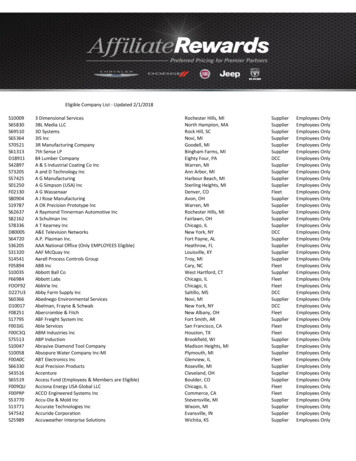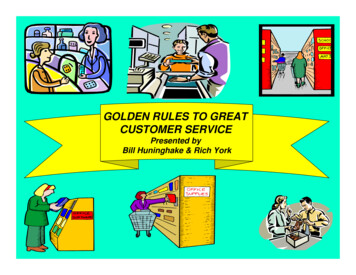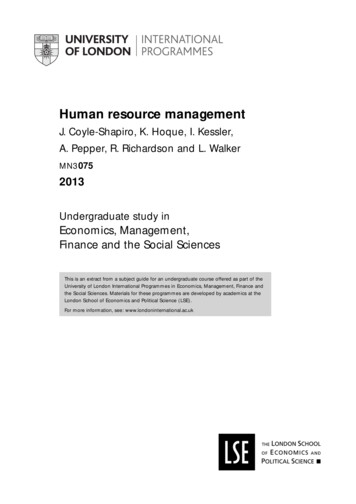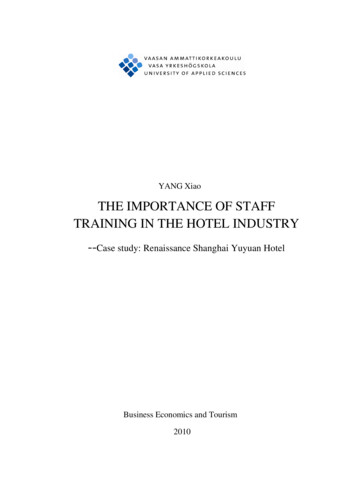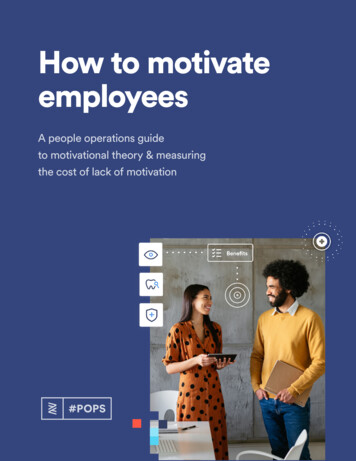
Transcription
How to motivateemployeesA people operations guideto motivational theory & measuringthe cost of lack of motivation
True motivation is the basis for all sorts of crazyachievements. It’s how babies learn to walk, howElon Musk managed to land rockets back on Earth,and how businesses go from good to great.But oftentimes it’s hard to articulate what motivates us.For instance, can you really tell me what motivates you right now?Not just what gets you up out of bed. But what makes you feel alive,bigger than yourself, ready to dive into something regardless of how hardit is because you believe in it?It’s even harder to articulate what motivates others.How to Motivate Employees? 2
But in People Operations (People Ops, or POPS) understanding whatmotivates our workforce is our raison d’etre. The extent to which we canextricate true motivators, and adjust our places of business to nurture suchmotivations, can be the difference between a company that “gets by” anda company that defines the next era.That’s because when a company brings together a group of people whoare authentically motivated, amazing things happen. Synergies happen.People become engaged in their work and bring on bigger challengesto achieve greater outcomes.In fact, engaged workers are found to be 43 percent more productive (Murlisand Schubert 2001), and drive 21 percent more profit to their employers(Smarp 2019), while unengaged workers lose businesses money. A lackof motivation among workers has been shown to lose businesses 300 billioneach year due to downtime, mistakes, and extra management (Gaille 2017).This eBook is designed to:1.Educate you on various models of motivation2.Introduce the concept of an employee motivation matrix3. Provide you with a framework for calculating the costsof employee engagementBy the end of this book we hope you’ll be able to articulate theories ofmotivation more easily, see pathways to operationalize them in your company,and calculate the cost impacts of an engaged vs. unengaged workforce.Let’s start with looking at various models of motivation.How to Motivate Employees? 3
Three modelsof humanmotivation
There are three leading models of motivationwe reference in depth in People Operations.Below you’ll find brief notes about the threemodels, which can be used to help you completethe exercises for this section. To learn more abouttheories of motivation, read Chapter 11:Employee Motivation.Note: It may be important here to reiterate that motivationassumes an underlying foundation of safety (think Maslow’sHierarchy of Needs). Employees who do not have adequatehealth care, clear visibility into their career path, or adequatecompensation (for example) may not feel secure enough withtheir job for below motivators to be effective.How to Motivate Employees? 5
McGregor and Doshi: Play, Purpose, PotentialMcGregor and Doshi’s Model of MotivationHigh performance reasons to workLow performance reasons to workPlayEmotional pressurePurposeEconomic pressurePotentialInertiaLindsay McGregor and Neel Doshi, a team of social and behavioralscientists who study and design high performance work cultures, suggestthere are three factors that lead to higher employee performance (play,purpose, and potential) and three factors that lead to lower performance(emotional pressure, economic pressure, inertia). Together, the three highperformance factors make up “motivation.”According to Doshi and McGregor, an employee will feel motivated if theirwork contributes to something bigger (purpose), or is in some way funor exciting (play), or if it’s serving a larger purpose such as their educationor experience (potential).How to Motivate Employees? 6
On the other hand, if people feel like they have to work to pay bills(economic pressure), or that they have to work to appease parentsor spouses (emotional pressure), or that they’re working just becausethat’s what they’ve always done (inertia), there’s a high chance they’llbe unmotivated.How this would look at your company:In a Doshi and McGregor model of motivation, POPS leaders wouldbuild work systems that felt fun and reiterated the greater purposeof the business’s vision to society. POPS leaders would make sureeach job role is clearly connected to the larger vision of the company,perhaps through cascading goals.How to Motivate Employees? 7
Pink: Autonomy, Mastery, PurposeDaniel Pink’s Model of MotivationAutonomy — the desire to be self-directedMastery — the desire to continuously improvePurpose — the desire to make an impact towards the company’s overall missionDaniel Pink, author of six books about business and human behavior,offers another perspective on how motivation works. According to Pink,feelings of autonomy, mastery, and purpose are key. Things like beingable to do work in your own way (autonomy), having avenues to deepenindividual skill sets (mastery), and understanding how your work impactsa larger goal (purpose) are central to unleashing motivation.How this would look at your company:In a Pink model, POPS leaders would create a workplace that focusedon building trust between managers and employees and setting highstandards of achievement. Trust could be developed by establishingflexible work policies or committing to asynchronous work hours. Thiswould allow individual contributors to build their own work situations(work from home, asynchronous work hours, etc). High standards couldinclude ambitious goal setting and support for continued educationopportunities, like education reimbursements, continued educationstipends, or mentorship.How to Motivate Employees? 8
Rynes, Gerhart, Minette: MoneyRynes, Gerhard, Minette Study on MotivationMoney — an under-reported and very influential factor of motivationMoney is controversial when it comes to motivation. A large majorityof modern research says pay isn’t unconnected to real feelings of driveor purpose (Hasan, 2014). But others say it’s the single most important thing.In a novel 2004 study, Sara Rynes, Barry Gerhart, and Kathleen Minette,determined pay is the most universal employee motivator and that, in fact,most HR professionals undervalue its importance. The research suggeststhis is because people tend to downplay the importance of money whenthey self-report what motivates them. But when looking at meta-analysesof the data it becomes clear that money is one of — if not the biggest— employee motivator. Without money, employees don’t have a reasonto show up to work. They quickly become disgruntled. And start lookingfor other employers to fit the bill(s). Again, this is up for debate. Alfie Kohn,another motivation researcher, would tell you money creates systems thatare problematic in his book Punished by Rewards.How this would look at your company:In a strictly money-based motivation model, leaders would focuson compensation, benefits, and fiscal incentives as their number one concern.To continually drive motivation, they’d offer monetary merit-based rewardsalmost exclusively, including raises, bonuses, and performance incentives.How to Motivate Employees? 9
Building yourmotivation muscle— putting theoryinto practice
Now that we’ve looked at someof the theoretics with regardto employee motivation, it’stime to get practical. In thissection, we will providea few exercises that youcan do in your mindor on a scratchpiece of paper.The exercises are designed to helpyou think about what motivatesyour unique workforce and howto operationalize somethingas immaterial as motivation.Let’s get to it.How to Motivate Employees? 11
Building a Motivation MatrixA Motivation Matrix is a simple way to document your various motivatorsacross your organization or team. To build one, first identify thekinds of workers at your business. Be careful here to not be exclusiveor stereotyping. Instead look for natural groups of people that have similarmotivators. You can even list people out one by one to ensure you’renot being biased or discriminatory. Then, in the second column, list themotivators you think would work best for that group. Use motivators youlearned from the theorists above, or come up with your own. And, if youdon’t know what motivates a certain group, team, or individual, ask them!A framework and completed example are provided for you.Motivation MatrixMotivation Matrix ExampleGen ZAutonomy PlayMillennialsPurpose PotentialBoomersAutonomy PurposeWhile your Motivation Matrix doesn’t provide tactical guidance for managerson the day to day, it can be a good reminder for management in how theydevelop their culture and incentives for their teams. It’s simple, but powerful.How to Motivate Employees? 12
Calculating thecost of employeeengagement
Obviously motivation is key in getting peopleto do things. But does that really matter?How important is it to have motivated employees?This is a common question, but often unanswered. It’s tricky, but notimpossible, to calculate the fiscal impact of an engaged (motivated) vs.unengaged (unmotivated) worker.How easy it is to calculate depends on the kind of work your employeesare doing, and how easily you can assume the “value” of that job or role.For example, a sales/service job is easier to calculate the value to thebusiness than, say, a marketing or management role, because they havean actual dollar amount of impact on a company. To get a number thatyour leadership team can agree on, you may need to agree on estimatedmonetary value that marketing or management role brings, to continue theexample. If marketing or management roles aren’t tied to revenue, you mayneed to estimate the value those individuals bring.Once you’ve identified a value for each role, you can start building out thefiscal impact of keeping or losing those employees. To do this you lookat the value each person brings in dollars (“Business value”) less the costof keeping that employee (“Labor cost).If you play around with this framework a bit, you’ll note a few interestingthings. First, it’s always costly for a business to lose employees and rehirenew staff. Downtime associated with onboarding and familiarity with thebusiness can equate to disrupted business value, even if you hire a top-notchcandidate. Another easy takeaway is that you’ll find the actualized costof losing an engaged worker is far greater than losing an unengaged worker.The value the engaged workers provides to your business in nonlinear. Thisassumes you have effective hiring that brings in continued strong talent.How to Motivate Employees? 14
EXAMPLE:Cost of losing an unengaged worker with a new hire (assuming a strong new hire) (example)EngagedEmployeeUnengagedEmployee 4,167 4,167 15,000 5,000Labor cost 4,167 4,167Business value 15,000 5,000Labor cost 4,167 4,167Business value 15,000 5,000Labor cost 4,167Business value 15,000Labor cost 4,167New HireLabor costMonth 1(This could be salary,monthly costs, etc. Mustbe recorded in dollars)Business value(This could be salesquota, upsell quota,estimated businessimpact. Mustbe recorded in dollars)Month 2Month 3Month 4Month 5Business value 15,000 4,167 0 - put “ 0” forthe expectednumber of monthsthe new hirewill be rampingor onboarding.How to Motivate Employees? 15
Month 6Month 7Month 8Month 9Month 10Month 11Month 12Labor cost 4,167 4,167Business value 15,000 0Labor cost 4,167 4,167Business value 15,000 5,000Labor cost 4,167 4,167Business value 15,000 10,000Labor cost 4,167 4,167Business value 15,000 15,000Labor cost 4,167 4,167Business value 15,000 15,000Labor cost 4,167 4,167Business value 15,000 15,000Labor cost 4,167 4,167Business value 15,000 15,000How to Motivate Employees? 16
TotalsExpected Value(This is the expected value, revenue, or other dollar-amount impact your two employees arebeing compared on) 360,000.00Actual Value 270,000.00Labor Costs 95,833.33New Hire Costs 4,129.00Expected Profit 264,167(This should extrapolate on profit available based on value - labor costs)Actual Profit 170,038Delta 94,129( Expected Profit - Actual Profit)Percent of Expected Profit, Lost35.63%How to Motivate Employees? 17
MODEL BCost of losing an engaged worker (assuming a strong new hire)EngagedEmployeeMonth 1UnengagedEmployeeNew HireLabor costBusiness valueMonth 2Labor costBusiness valueMonth 3Labor costBusiness valueMonth 4Labor costBusiness valueMonth 5Labor costBusiness valueMonth 6Labor costBusiness valueMonth 7Labor costBusiness valueMonth 8Labor costBusiness valueHow to Motivate Employees? 18
Month 9Labor costBusiness valueMonth 10Labor costBusiness valueMonth 11Labor costBusiness valueMonth 12Labor costBusiness valueTotalsExpected RevenueActual RevenueLabor CostsNew Hire CostsExpected ProfitActual ProfitDeltaPercent of Expected Profit, LostHow to Motivate Employees? 19
To calculate the impact of losing an engaged worker as compared to losingan unengaged worker, subtract the amount of “actual profit” from theunengaged worker sheet from the engaged worker sheet. This helps youarticulate why it’s important to retain good workers using data-basedfinancials.Actual profit when losing an engaged worker - Actual profit when losingan unengaged work dollar amount impact of losing a top performer.For each engaged worker (aka top performer) we lose, our business suffers . more than losing an unengaged worker in a single year.How to Motivate Employees? 20
Conclusion
This short eBook is intended to get you startedwith employee motivational theory, as wellas provide you with practical tools to operationalizemotivation concepts to make your workforcestronger. We covered motivational theory, howto build a Motivation Matrix, and how to calculatethe cost difference between an engaged workerand an unengaged worker.If you’d like to dive deeper into employee motivation, and ways to getthe most of your workforce we recommend buying People Operations:Automate HR, Design a Great Employee Experience, and Unleash YourWorkforce available for purchase on Amazon. This is the go-to businessbook on the future of work and the future of HR.How to Motivate Employees? 22
In this short guide we cover the basicson People Operations. Enough for youto get key principles and be dangerous.If you want a more in-depth look at the People Operations approach,check out our full length book: People Operations: Automate HR, Designa Great Employee Experience, and Unleash Your Workforce (Wiley, 2021).CLICK TO ORDER BOOK
zenefits.comDisclaimer: The materials available in this publication,as well as use of, and access to, this publication orany of the emails, marketing materials, or derivativeassets, are for informational purposes only and notfor the purpose of providing legal advice. You shouldcontact your attorney to obtain advice with respectto any particular issue or problem. 2021, YourPeople, Inc., d/b/a Zenefits.All rights reserved.
Pink: Autonomy, Mastery, Purpose Daniel Pink's Model of Motivation Autonomy — the desire to be self-directed Mastery — the desire to continuously improve Purpose — the desire to make an impact towards the company's overall mission Daniel Pink, author of six books about business and human behavior,
